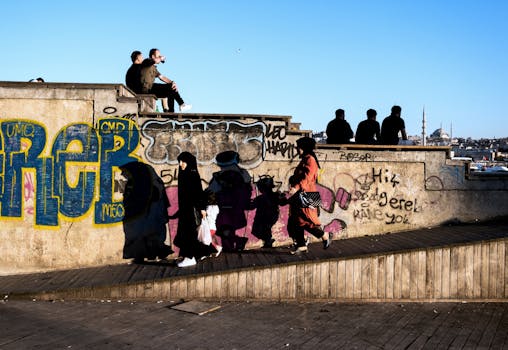
Cultural Fusion: Embracing Diversity in European Lifestyles by 2025
Introduction to Cultural Fusion
Cultural fusion, also known as cultural hybridity, refers to the blending of different cultural practices, values, and traditions to create a new and unique cultural identity. In the context of European lifestyles, cultural fusion is becoming increasingly important as the continent becomes more diverse. By 2025, it is expected that cultural fusion will be a defining feature of European lifestyles, with people from different cultural backgrounds coming together to create a vibrant and dynamic cultural landscape.
Benefits of Cultural Fusion
There are many benefits to cultural fusion in European lifestyles. For one, it promotes cross-cultural understanding and exchange, which can help to break down cultural barriers and foster greater empathy and tolerance. Cultural fusion can also lead to the creation of new and innovative cultural practices, such as music, art, and cuisine, which can enrich the cultural landscape of Europe. Furthermore, cultural fusion can provide opportunities for people from different cultural backgrounds to come together and share their experiences, traditions, and values, which can help to build stronger and more cohesive communities.
Challenges of Cultural Fusion
While cultural fusion can bring many benefits, it also poses some challenges. One of the main challenges is the risk of cultural homogenization, where the dominant culture assimilates the minority culture, leading to the loss of cultural diversity. Another challenge is the potential for cultural conflicts and misunderstandings, which can arise when people from different cultural backgrounds interact and exchange ideas. Additionally, cultural fusion can also raise questions about cultural identity and belonging, particularly for people who identify with multiple cultural backgrounds.
Examples of Cultural Fusion in European Lifestyles
There are many examples of cultural fusion in European lifestyles. For instance, the city of London is home to a diverse range of cultural communities, including Asian, African, and Caribbean communities, which have come together to create a unique and vibrant cultural landscape. Similarly, the city of Berlin has a thriving cultural scene, which is characterized by a fusion of different cultural styles, including art, music, and cuisine. In addition, the European Union’s cultural policy has promoted cultural fusion by supporting cultural exchange programs and initiatives that bring people from different cultural backgrounds together.
Conclusion
In conclusion, cultural fusion is an important aspect of European lifestyles, and it is expected to play an even more significant role by 2025. While there are challenges to cultural fusion, the benefits of cross-cultural understanding, exchange, and innovation make it an essential part of creating a vibrant and dynamic cultural landscape in Europe. As the continent becomes increasingly diverse, it is essential to promote cultural fusion and to support initiatives that bring people from different cultural backgrounds together.





